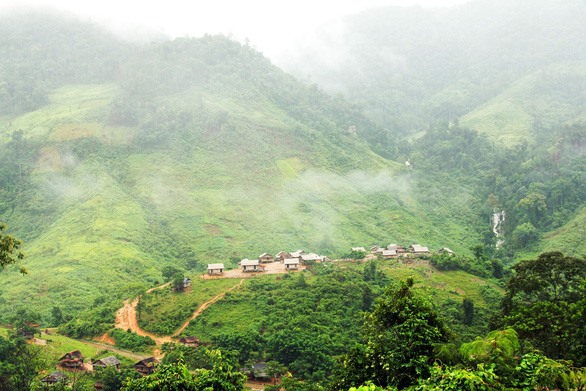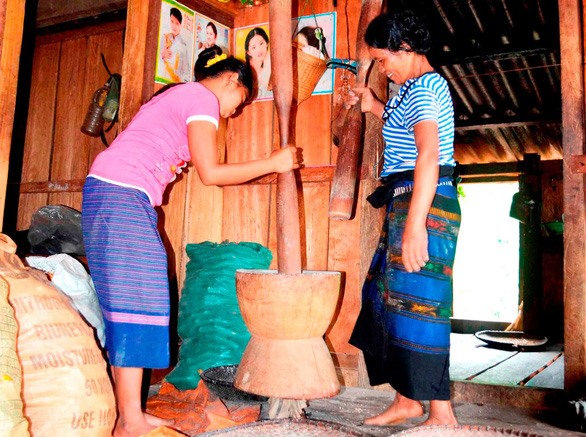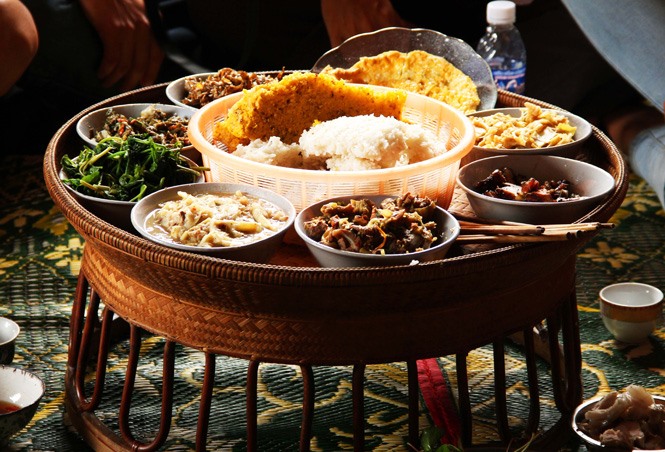Viet Nam News
By Minh Minh
Far into a forest, the roofs of Ta Vong Village are hidden in the clouds.
The village in the central province of Quang Binh is home to the May and Ma Lieng ethnic peoples and is a wonderful hideaway worth discovering.
From Dong Hoi City, Quang Binh, you can follow the Ho Chi Minh Trail to reach Cha Cap Mountain. Ta Vong Village is located at Cha Cap Valley, near the border with Laos.
Ta Vong Village attracts tourists with its stunning landscapes and unique culture.
 |
| Roofs of Ta Vong Village are hidden in clouds. — VNS Photo Hoang Bui |
Living in the clouds
Bui Xuan Hoang has travelled to many remote areas in the province. But the first time he reached Ta Vong Valley, he was floored.
“Standing on Cha Cap Mountain with the view of the valley, we can see 25 roofs of Ta Vong Village. They look like musical notes written on the stave of the forest.
“It’s beautiful from a far distance. When we come close, it brings different impressions. The wooden houses stand at different heights of the hills like a terrace field.”
What impressed him most was the clean environment. Everything was in order, each house had a pretty vegetable garden and all the paths were clean.
“When I travel to villages in the mountainous regions, some people don’t have an awareness of protecting the environment like here,” said Hoang.
Ho Khien, head of the village, said they live together with the clouds. At dawn and dusk, clouds drift close to the roofs.
“Living in such a beautiful place, it we don’t keep the hygiene and order, we feel guilty towards nature,” he said.
"Our lifestyle is one thing that makes tourists remember Ta Vong Village.”
 |
| Ethnic women prepare poi for guests. — VNS Photo Hoang Bui |
In recent years, the local authorities have decided to develop tourism and selected three houses to run homestays.
“Tourists will live the life of the local people, that’s a good way to lure travellers, when they leave here, they always miss us,” said Khien.
When the curtain of the darkness falls, Khien often goes to Ta Leng Stream to catch fish. While his son releases the net, Khien goes to fetch firewood. When the fire is kindled, Khien’s son gathers the net and collects fish. They grill the fish on the fire and locals and guests alike enjoy the fish with rice wine and talk by the fire till midnight. Hoang said it’s an unforgettable time.
“The night is silent, we just hear the whispers of ourselves, the sound of insects and water, it’s very peaceful,” he said.
The next morning, the local people wake up the guests with the sound of grinding poi, a traditional food made from steamed glutinous rice, corn and cassava. They grind them separately then steam in a bamboo tube.
 |
| Local people in Ta Vong treat tourists with specialities. — VNS Photo Hoang Bui |
Ho Thi Pang, Khien’s wife, said poi is a speciality that can be found of the Ma Lieng and May ethnic groups. She instructs tourists to grind the mixture in a big stone mortar but they soon confess that it’s too hard.
Pang presents the meal on a knitted rattan tray. Apart from poi, tourists enjoy bamboo flowers, stream fish, grilled pork and wild vegetables.
After the meal, tourists have free time to understand the local culture or go trekking in the mountains and Ta Leng Stream with its small waterfalls. People take photos but a camera can’t capture the spectacular landscape, said Hoang.
“Every corner is beautiful, the mountain, stream, waterfall and bushes with pretty flowers can be enjoyed with the eyes,” he said.
Dinh Tien Dung, an officer of Cultural Bureau of Trong Hoa Commune, said people still preserve traditional festivals and rituals.
“The local authorities hope to develop tourism at the region to upgrade the living conditions of the people,” he said.
Ta Vong Village has huge potential with its beautiful nature and rich culture. Above all, local people have an awareness and responsibility of preserving traditions and protecting the environment for themselves, not only for tourism. — VNS